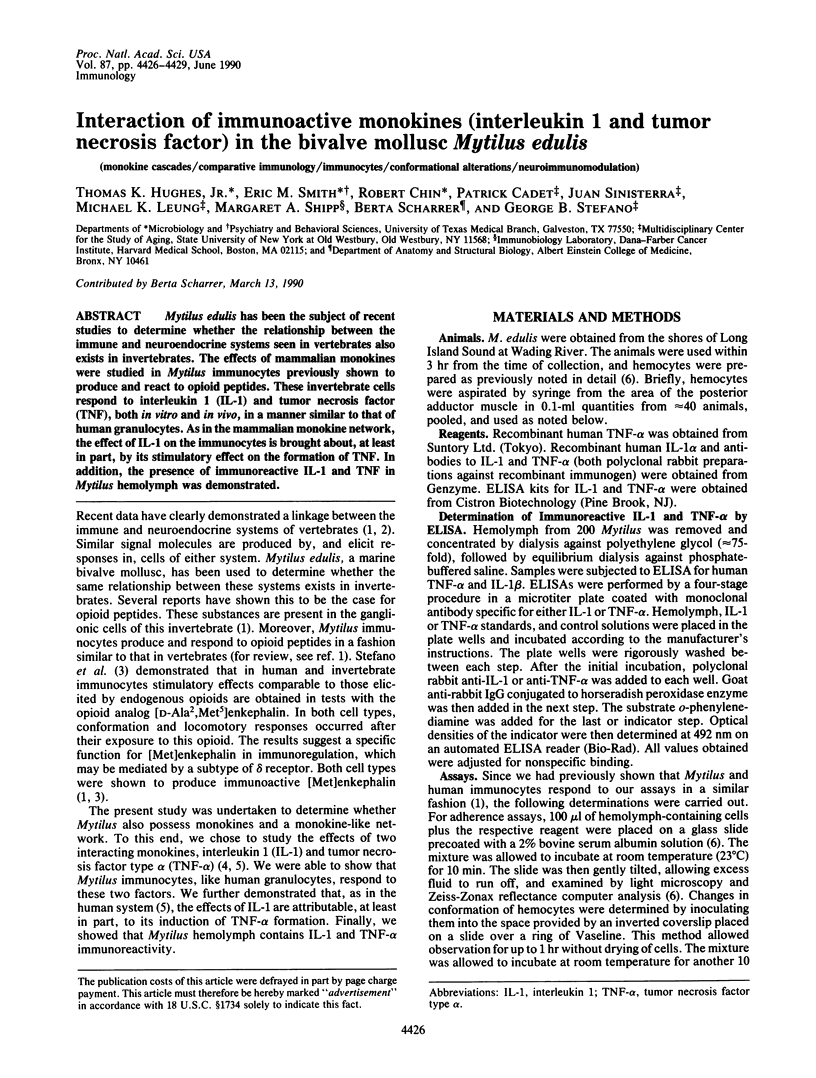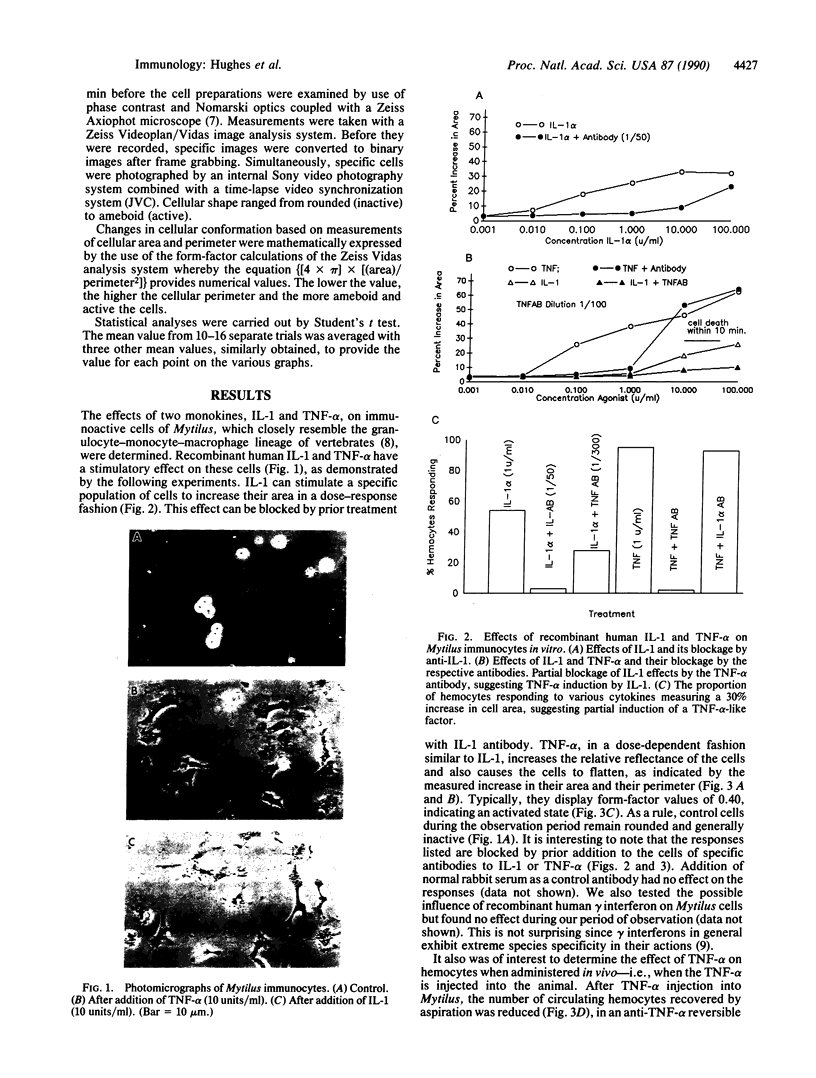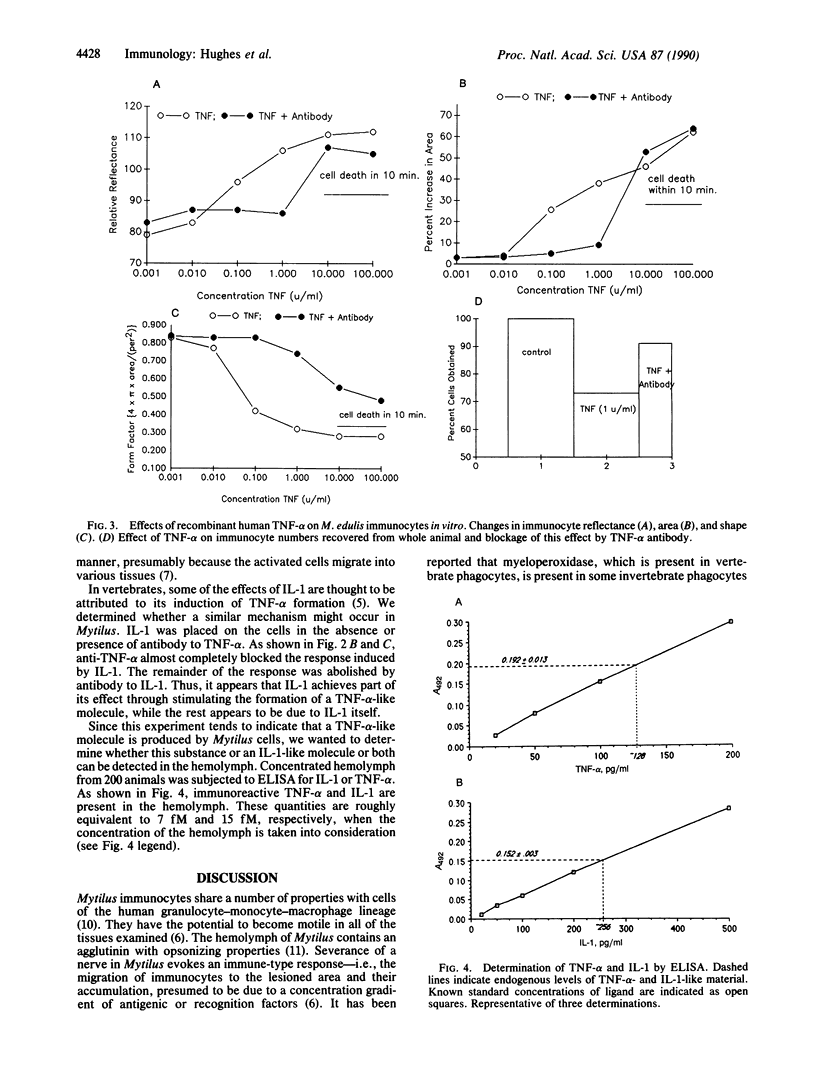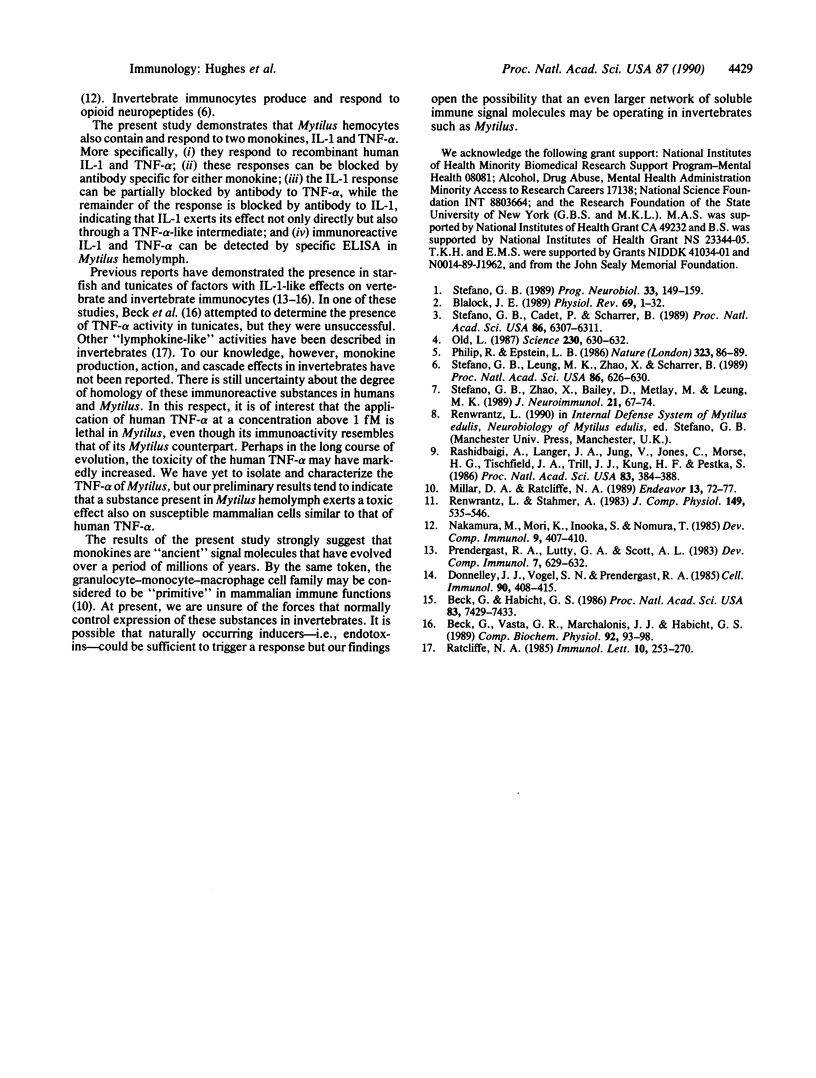Abstract
Mytilus edulis has been the subject of recent studies to determine whether the relationship between the immune and neuroendocrine systems seen in vertebrates also exists in invertebrates. The effects of mammalian monokines were studied in Mytilus immunocytes previously shown to produce and react to opioid peptides. These invertebrate cells respond to interleukin 1 (IL-1) and tumor necrosis factor (TNF), both in vitro and in vivo, in a manner similar to that of human granulocytes. As in the mammalian monokine network, the effect of IL-1 on the immunocytes is brought about, at least in part, by its stimulatory effect on the formation of TNF. In addition, the presence of immunoreactive IL-1 and TNF in Mytilus hemolymph was demonstrated.
Full text
PDF



Images in this article
Selected References
These references are in PubMed. This may not be the complete list of references from this article.
- Beck G., Habicht G. S. Isolation and characterization of a primitive interleukin-1-like protein from an invertebrate, Asterias forbesi. Proc Natl Acad Sci U S A. 1986 Oct;83(19):7429–7433. doi: 10.1073/pnas.83.19.7429. [DOI] [PMC free article] [PubMed] [Google Scholar]
- Beck G., Vasta G. R., Marchalonis J. J., Habicht G. S. Characterization of interleukin-1 activity in tunicates. Comp Biochem Physiol B. 1989;92(1):93–98. doi: 10.1016/0305-0491(89)90318-0. [DOI] [PubMed] [Google Scholar]
- Blalock J. E. A molecular basis for bidirectional communication between the immune and neuroendocrine systems. Physiol Rev. 1989 Jan;69(1):1–32. doi: 10.1152/physrev.1989.69.1.1. [DOI] [PubMed] [Google Scholar]
- Donnelly J. J., Vogel S. N., Prendergast R. A. Down-regulation of Ia expression on macrophages by sea star factor. Cell Immunol. 1985 Feb;90(2):408–415. doi: 10.1016/0008-8749(85)90205-9. [DOI] [PubMed] [Google Scholar]
- Millar D. A., Ratcliffe N. A. The evolution of blood cells: facts and enigmas. Endeavour. 1989;13(2):72–77. doi: 10.1016/0160-9327(89)90005-7. [DOI] [PubMed] [Google Scholar]
- Nakamura M., Mori K., Inooka S., Nomura T. In vitro production of hydrogen peroxide by the amoebocytes of the scallop, Patinopecten yessoensis (Jay). Dev Comp Immunol. 1985 Summer;9(3):407–417. doi: 10.1016/0145-305x(85)90004-7. [DOI] [PubMed] [Google Scholar]
- Old L. J. Tumor necrosis factor (TNF). Science. 1985 Nov 8;230(4726):630–632. doi: 10.1126/science.2413547. [DOI] [PubMed] [Google Scholar]
- Philip R., Epstein L. B. Tumour necrosis factor as immunomodulator and mediator of monocyte cytotoxicity induced by itself, gamma-interferon and interleukin-1. Nature. 1986 Sep 4;323(6083):86–89. doi: 10.1038/323086a0. [DOI] [PubMed] [Google Scholar]
- Rashidbaigi A., Langer J. A., Jung V., Jones C., Morse H. G., Tischfield J. A., Trill J. J., Kung H. F., Pestka S. The gene for the human immune interferon receptor is located on chromosome 6. Proc Natl Acad Sci U S A. 1986 Jan;83(2):384–388. doi: 10.1073/pnas.83.2.384. [DOI] [PMC free article] [PubMed] [Google Scholar]
- Ratcliffe N. A. Invertebrate immunity--a primer for the non-specialist. Immunol Lett. 1985;10(5):253–270. doi: 10.1016/0165-2478(85)90100-2. [DOI] [PubMed] [Google Scholar]
- Stefano G. B., Cadet P., Scharrer B. Stimulatory effects of opioid neuropeptides on locomotory activity and conformational changes in invertebrate and human immunocytes: evidence for a subtype of delta receptor. Proc Natl Acad Sci U S A. 1989 Aug;86(16):6307–6311. doi: 10.1073/pnas.86.16.6307. [DOI] [PMC free article] [PubMed] [Google Scholar]
- Stefano G. B., Leung M. K., Zhao X. H., Scharrer B. Evidence for the involvement of opioid neuropeptides in the adherence and migration of immunocompetent invertebrate hemocytes. Proc Natl Acad Sci U S A. 1989 Jan;86(2):626–630. doi: 10.1073/pnas.86.2.626. [DOI] [PMC free article] [PubMed] [Google Scholar]
- Stefano G. B. Role of opioid neuropeptides in immunoregulation. Prog Neurobiol. 1989;33(2):149–159. doi: 10.1016/0301-0082(89)90038-5. [DOI] [PubMed] [Google Scholar]
- Stefano G. B., Zhao X. H., Bailey D., Metlay M., Leung M. K. High affinity dopamine binding to mouse thymocytes and Mytilus edulis (Bivalvia) hemocytes. J Neuroimmunol. 1989 Jan;21(1):67–74. doi: 10.1016/0165-5728(89)90160-4. [DOI] [PubMed] [Google Scholar]





